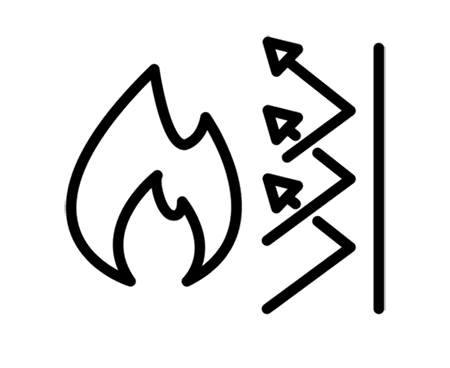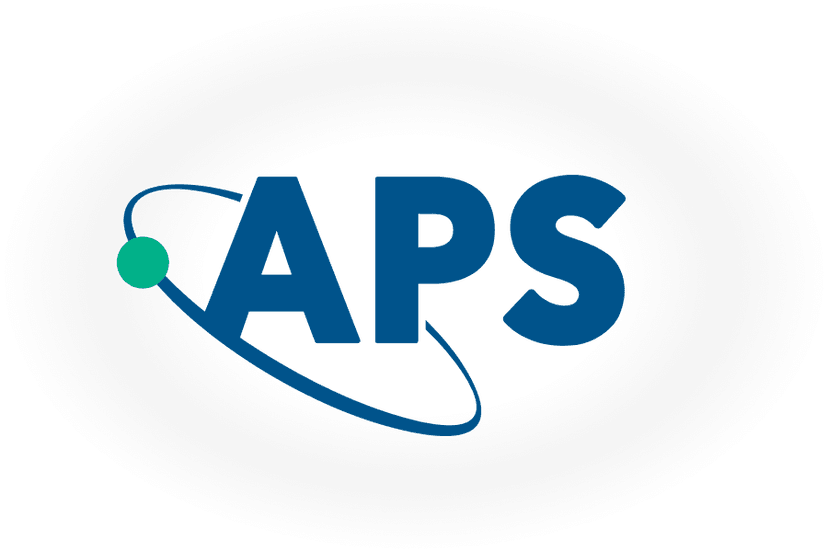This is the teacher guide for this lesson. A student-focused guide to assist learners as they perform the activity is available.

Turning Thermal Tides
Experimenting with water and heat
How will hot and cold water move when they are placed together?
This resource was originally published in PhysicsQuest 2019: Heat.
How will hot and cold water move when they are placed together?
- Rough grain sandpaper
- Fine grain sandpaper
- 4 nuts
- Fun dough
- Rubber bands
- Ruler
- Tape
N/A
- Total time45 - 60 Minutes
- Education levelGrades 5 - 9
- Content AreaHeat
- Educational topicThermodynamics
The water in the bottles is made of molecules of hydrogen and oxygen (H²O). Water at room temperature has a density of one g/mL. When water is hot, the molecules move quickly, bumping against one another and spreading out. The further apart the molecules move, the less dense the material. This causes the hot water to be less dense than room temperature water.
Hot water will have a density of less than one. In cold water, the molecules move slowly and are able to pack more densely. Because the molecules are closer together, the cold water will have a higher density. There are more molecules in the space, causing the water to have higher density. The cold water will have a density greater than one g/mL.
When substances have different densities, they will settle and move within a container based on their relative densities. Less dense substances will rise and more dense substances will sink. This happens when liquids, solids, and gases interact.
If you look at an oil and vinegar salad dressing, you will see that the oil has risen to the top of the bottle and the vinegar mixture has sunk to the bottom. What you are observing is the separation of two liquids based on their densities. The oil, which is less dense, rises. The vinegar mixture, which is more dense, sinks. Even if you shake the bottle, eventually they will settle back into these original positions.
In this experiment, when the bottle of hot water is placed on top of the bottle of cold water, the hotter (and therefore less dense) liquid does not need to move anywhere. The cold water with the higher density will stay in its bottle at the bottom. The two will mix slowly where they meet as thermal energy transfers from one liquid to the other. When the hot water bottle is placed on the bottom, the water will rise toward the top of the container because its density is lower than the cold water.
The hot and cold waters will mix quickly because the hot water will rise to the top, passing through the cold water on its way. Eventually, the water in both bottles will mix together to reach thermal equilibrium. This happens because the higher temperature water is in contact with the lower temperature water. While they are in contact, they are transferring thermal energy. This will continue until both liquids are the same temperature.
Thermal equilibrium will occur in less time when the hot water is on the bottom than when it is placed on top. This is because the transfer of heat happens through a current, or convection, when the hot water passes through the cold. When the hot water bottle is the one on top, the transfer of energy is mostly through conduction—the transfer of heat by contact—and happens more slowly.
These are the key terms that students should know by the END of the two lessons. They do not need to be front loaded. In fact, studies show that presenting key terms to students before the lesson may not be as effective as having students observe and witness the phenomenon the key terms illustrate beforehand and learn the formalized words afterwards. For this reason, we recommend allowing students to grapple with the experiments without knowing these words and then exposing them to the formalized definitions afterwards in the context of what they learned.
However, if these words are helpful for students on an IEP, ELL students, or anyone else that may need more support, please use at your discretion.
- Conduction: Transfer of heat energy through contact.
- Convection: Transfer of heat energy through currents
- Density: The mass of a substance per unit volume.
- Molecules: The smallest particle of a substance that retains all the properties of the substance and is composed of one or more atoms
- Thermal Energy: Energy in the for of heat
- Thermal Equilibrium: A state of a system in which all parts are at the same temperature
Students will experiment with hot and cold water to explain densities.
Think of a drink that recommended you shake it before you drink it.
- Why did you have to shake it?
- What did that have to do with the densities of the different ingredients in the drink?
Have you ever noticed that the air is warmer in a room the higher up you move?
- Have you noticed it is colder near the floor?
- What does that tell you about the densities of the warm and cold air?
How do you predict the hot and cold water will move when they are placed together?
Use the turn & talk protocol
- Pair students up
- Give them a minute to think quietly
- Give students 2 minutes to discuss their thinking
- Have students record their answers or share out to the whole group
Fill the first 20 oz. bottle two-thirds of the way full with very hot water. Use caution: This needs to be done carefully to avoid getting burned! Fill the second 20 oz. bottle two-thirds of the way full with very cold water.
Place one dye tablet in each bottle. Make sure the dye tablets are different colors.
Place one end of the clear plastic tube into one of the bottles. The middle of the tube should be at the top of the bottle.
Use the clay to secure the tube and seal the gap between the opening of the bottle and the sides of the tube.
This next step will be slightly difficult so you may want to do it over a baking sheet, sink, or bucket. Tip the bottles, and very carefully slide the other end of the tube into the second bottle. Try not to let the water in the two bottles mix.
Seal the second bottle securely with clay. You should now have two bottles, attached with a plastic tube and clay, laying on their sides. Hot water of one color should be in one bottle and cold water of another color should be in the other.
Make sure students are put into intentional groups. See above.
Students will complete the experiment using the Student Guide where we have outlined the experiment for students and along the way, they record results and answer questions.
In the student guide, they will answer questions that help them understand what heat does to water.
Continue to listen in on each group’s discussion, answer as few questions as possible. Even if a group is off a little, they will have a chance to work out these stuck points later.
Suggested STEP UP Everyday Actions to incorporate into activity:
- When pairing students, try to have male/female partners and invite female students to share their ideas first.
- As you put students into groups, consider having female or minority students take the leadership role.
- Take note of female participation. If they seem to be taking direction and following along, elevate their voice by asking them a question about their experiment.
- Consider using white boards so students have time to work through their ideas and brainstorms before saying them out loud.
- As students experiment, roam around the room to listen in on discussion and notice experiment techniques. If needed, stop the class and call over to a certain group that has hit on an important concept.
Consider using the RIP protocol (Research, Instruct, Plan) for lab group visits and conferring.
Consider culturally responsive tools and strategies and/or open ended reflection questions to help push student thinking, evidence tracking, and connections to their lives. Look for *** below to find suggested places to add.
Post the conclusion question
- What claim can you make in regards to the density of hot and cold water?
Use the 4 quadrants protocol to have students share and refine their thinking.
- Have a student from each small group or table make a claim and read the four statements aloud and place the paper with the statements on it in the middle of the table.
- Going in turn, have each student state which of the four statements they most agree with and why.
- No one may interrupt whichever student is speaking.
- When the speaker is finished, he or she places a BINGO chip on the statement they most agree with.
- Going in turn, each of the other three team members states their beliefs and places a BINGO chip.
- As a whole room, tally how many chips there are for each statement and ask students to clarify their thinking to each other. Use talk moves from Michaels and O’Connor’s Talk Science Primer to ask students to elaborate and clarify their thinking. If needed, each student can write his or her ideas at the end of class in their science journal.
After students have had a chance to discuss key ideas from the lesson and complete their student guides, you can now clarify and give concise definitions to the forces they experimented with.
Real world connections -
- Describe an instance in your daily life where you observed a similar phenomenon.
Suggestions for drawing, illustrating, presenting content in creative ways
Engineering and design challenges connected to the content
Credits
Coordination, Research, Text, and Editorial Review Jon Anderson, Isabel Bishop, Randie Hovatter, Jamie Liu, Leah Poffenberger, James Roche, Natalie Ruiz, Laurie Tangren, Rose Villatoro, David Voss
Graphic Design and Production Meghan White
Illustration of Experiment Guides Isabel Bishop
Illustration of Dr. Chien-Shiung Wu Annamaria Ward
Updated in 2023 by Sierra Crandell, M.Ed. partially funded by Eucalyptus Foundation
Extension by Jenna Tempkin with Society of Physics Students (SPS)
